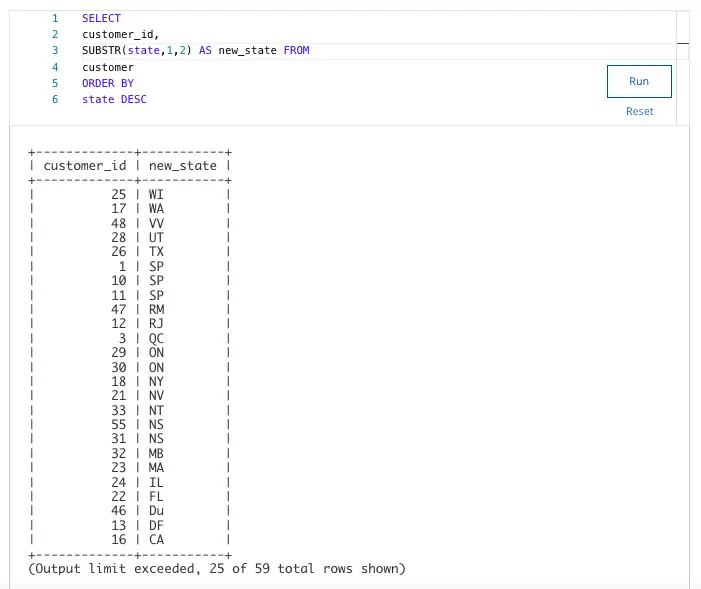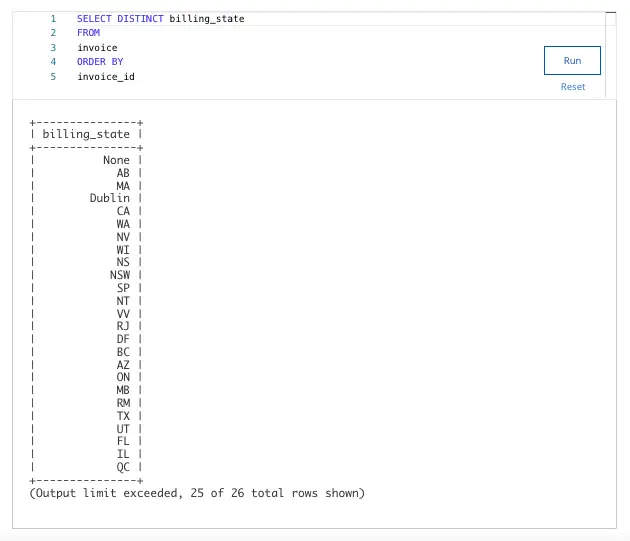12. Fill in the blank: _____ refers to the process of converting data from one type to another.
- Formatting
- Cleaning
- Typecasting
- Querying
13. A data analyst is working with product sales data. They import new data into a database. The database recognizes the data for product price as text strings. What SQL function can the analyst use to convert text strings to floats?
- LENGTH
- TRIM
- SUBSTR
- CAST
14. Fill in the blank: The _____ function can be used to join strings to create a new column.
- CAST
- COALESCE
- TRIM
- CONCAT
15. As a data analyst, you are working on a quick project containing a small amount of data. As the data was emailed to you, there is no need to query the data. What tool should you use to perform your analysis?
- Spreadsheet
- SQL
- word process
- CSV
16. A data analyst has added a massive table to their database on accident and needs to remove the table. What command can the analyst use to correct their mistake?
- DROP TABLE IF NOT EXISTS
- INSERT INTO
- REMOVE TABLE IF EXISTS
- DROP TABLE IF EXISTS
17. You are working with a database table that contains invoice data. The table includes a column for customer_id. You want to remove duplicate entries for customer_id and get a count of total customers in the database.
You write the SQL query below. Add a DISTINCT clause that will remove duplicate entries from the customer_id column.
NOTE: The three dots (...) indicate where to add the clause.

What is the total number of customers in the database?
- 84
- 105
- 43
- 59
18. In SQL databases, what data type refers to a number that does not contain a decimal?
- String
- Integer
- Boolean
- Float
19. After joining multiple tables you find your data contains a significant amount of null values. What function can you use to return only the non-null values in a list ?
- CAST
- COALESCE
- TRIM
- CONCAT
20. You are working with a database table that contains customer data. The table includes columns about customer location such as city, state, and country. The state names are abbreviated. You want to retrieve the first 2 letters of each state name. You decide to use the SUBSTR function to retrieve the first 2 letters of each state name, and use the AS command to store the result in a new column called new_state.
You write the SQL query below. Add a statement to your SQL query that will retrieve the first 2 letters of each state name and store the result in a new column as new_state.
NOTE: The three dots (...) indicate where to add the statement.
NOTE: SUBSTR takes in three arguments being column, starting_index, ending_index

What customer ID number is in row 9 of your query result?
NOTE: The query index starts at 1 not 0.
- 3
- 55
- 47
- 10
Shuffle Q/A 2
21. A junior data analyst joins a new company. The analyst learns that SQL is heavily utilized within the organization. Why would the organization choose to invest in SQL? Select all that apply.
- SQL is a programming language that can also create web apps.
- SQL can handle huge amounts of data.
- SQL is a powerful software program.
- SQL is a well-known standard in the professional community.
22. You are working with a database table that contains invoice data. The table includes columns for invoice_id and billing_state. You want to remove duplicate entries for billing state and sort the results by invoice ID.
You write the SQL query below. Add a DISTINCT clause that will remove duplicate entries from the billing_state column.
NOTE: The three dots (...) indicate where to add the clause.

What billing state appears in row 17 of your query result?
NOTE: The query index starts at 1 not 0.
- AZ
- NV
- CA
- WI

